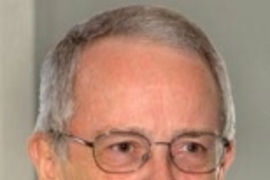President Emeritus Charles M. Vest has been nominated to be the next president of the National Academy of Engineering.
If elected by the NAE membership next March, Vest will succeed William A. Wulf, whose second term as NAE president will end on June 30, 2007. Vest's six-year term as president will begin on July 1.
"I could not be more pleased that Chuck Vest has accepted the nomination for the NAE presidency," said NAE Chair Craig Barrett, who is also chairman of the board of Intel Corp. "Chuck's broad experience and leadership at the national level will benefit the NAE greatly and allow it to continue the distinguished service to the nation that has been a hallmark of Bill Wulf's presidency."
The National Academy of Engineering is part of the National Academies, which also include the National Academy of Sciences, Institute of Medicine and National Research Council. These independent, nonprofit institutions serve as advisers to government and the public on issues related to science, engineering and medicine. NAE's membership consists of the nation's premier engineers, who are elected by their peers for their distinguished achievements.
The NAE president is a full-time employee of the organization at its headquarters in Washington, D.C., and also serves as the vice chair of the National Research Council, the principal research arm of the National Academies.
Vest, 65, served as MIT's president from 1990 through 2004. During that time, "he worked to strengthen federal-university-industry relations and undertook a number of initiatives to bring education and research issues to broader public attention," according to the NAE. "Vest placed special emphasis on enhancing science and engineering in undergraduate education. While stressing the importance of racial and cultural diversity among faculty and students at MIT, Vest also worked to build a stronger international dimension to the university's programs."
Selected as a member of the bipartisan Commission on the Intelligence Capabilities of the United States Regarding Weapons of Mass Destruction, which completed its report in 2005, Vest brought a strong science and engineering background to the analysis. He led a U.S. Department of Energy task force on the future of science programs in 2002-2003 and chaired a presidential advisory commission on the redesign of the International Space Station in 1992-1994. Vest was vice chair of the Council on Competitiveness for eight years, is a former chair of the Association of American Universities, and serves on the U.S. Secretary of Education's Commission on the Future of Higher Education.
Vest was elected to the NAE in 1993 "for technical and educational contributions to holographic interferometry and leadership as an educator," and he currently serves on the NAE Council.
Among Vest's career honors is the NAE's Arthur M. Bueche Award in 2000 "for his outstanding university leadership, commitment, and effectiveness in helping mold government policy in support of research, and forging linkages between academia and industry." Vest has served on numerous National Academies studies, most recently on the highly cited "Rising Above the Gathering Storm: Energizing and Employing America for a Brighter Economic Future," which highlights the roles of science and engineering in U.S. economic growth and competitiveness.
Vest earned a B.S. degree in mechanical engineering from West Virginia University in 1963. He received his M.S. and Ph.D. degrees in 1964 and 1967, respectively, from the University of Michigan, where he later held the positions of dean of engineering, provost and vice president for academic affairs. He is the recipient of 10 honorary doctoral degrees.
A version of this article appeared in MIT Tech Talk on September 27, 2006 (download PDF).







